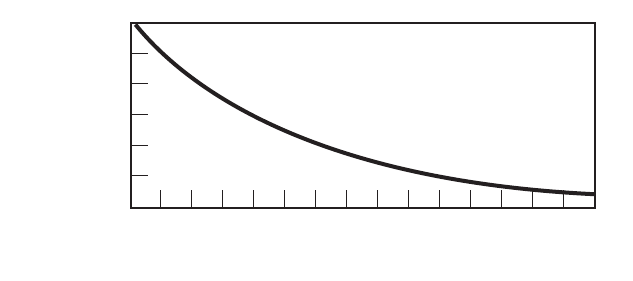User`s guide
Table Of Contents
- Title Page
- Contents
- Getting Started
- Introduction and Measurement
- Phase Noise Basics
- Expanding Your Measurement Experience
- Starting the Measurement Software
- Using the Asset Manager
- Using the Server Hardware Connections to Specify the Source
- Setting GPIB Addresses
- Testing the 8663A Internal/External 10 MHz
- Testing the 8644B Internal/External 10 MHz
- Viewing Markers
- Omitting Spurs
- Displaying the Parameter Summary
- Exporting Measurement Results
- Absolute Measurement Fundamentals
- Absolute Measurement Examples
- Residual Measurement Fundamentals
- What is Residual Noise?
- Assumptions about Residual Phase Noise Measurements
- Calibrating the Measurement
- Measurement Difficulties
- Residual Measurement Examples
- FM Discriminator Fundamentals
- FM Discriminator Measurement Examples
- AM Noise Measurement Fundamentals
- AM Noise Measurement Examples
- Baseband Noise Measurement Examples
- Evaluating Your Measurement Results
- Advanced Software Features
- Reference Graphs and Tables
- Approximate System Noise Floor vs. R Port Signal Level
- Phase Noise Floor and Region of Validity
- Phase Noise Level of Various Agilent Sources
- Increase in Measured Noise as Ref Source Approaches DUT Noise
- Approximate Sensitivity of Delay Line Discriminator
- AM Calibration
- Voltage Controlled Source Tuning Requirements
- Tune Range of VCO for Center Voltage
- Peak Tuning Range Required by Noise Level
- Phase Lock Loop Bandwidth vs. Peak Tuning Range
- Noise Floor Limits Due to Peak Tuning Range
- Tuning Characteristics of Various VCO Source Options
- 8643A Frequency Limits
- 8644B Frequency Limits
- 8664A Frequency Limits
- 8665A Frequency Limits
- 8665B Frequency Limits
- System Specifications
- System Interconnections
- PC Components Installation
- Overview
- Step 1: Uninstall the current version of Agilent Technologies IO libraries
- Step 2: Uninstall all National Instruments products.
- Step 3: Install the National Instruments VXI software.
- Step 4: Install the National Instruments VISA runtime.
- Step 5: Install software for the NI Data Acquisition Software.
- Step 6: Hardware Installation
- Step 7. Finalize National Instruments Software Installation.
- Step 8: System Interconnections
- Step 9: Install Microsoft Visual C++ 2008 Redistributable Package use default settings
- Step 10: Install the Agilent I/O Libraries
- Step 11: Install the E5500 Phase Noise Measurement software.
- Step 12: Asset Configuration
- Step 13: License Key for the Phase Noise Test Set
- Overview
- PC Digitizer Performance Verification
- Preventive Maintenance
- Service, Support, and Safety Information
- Safety and Regulatory Information
- Safety summary
- Equipment Installation
- Environmental conditions
- Before applying power
- Ground the instrument or system
- Fuses and Circuit Breakers
- Maintenance
- Safety symbols and instrument markings
- Regulatory Compliance
- Declaration of Conformity
- Compliance with German noise requirements
- Compliance with Canadian EMC requirements
- Service and Support
- Return Procedure
- Safety and Regulatory Information

112 Agilent E5505A User’s Guide
5
Absolute Measurement Fundamentals
Selecting a Reference
Selecting an appropriate reference source is critical when you are making a
phase noise measurement using the phase lock loop technique. The key to
selecting a reference source is to compare the noise level of the reference with
the expected noise level of the DUT. In general, the lower the reference
source’s noise level is below the expected noise level of the DUT the better.
(Keep in mind that you only need to be concerned about the reference source’s
noise level within the frequency offset range over which you plan to measure
the DUT.)
As shown by the graph in Figure 75, the further the reference source’s noise
level is below the noise level of the DUT, the less the reference source’s noise
contributes to the measurement results.
Using a Similar Device
The test system performs best when you are able to use a device similar to the
DUT as the reference source for your PLL measurement. Of course one of the
devices must be capable of being voltage tuned by the system to do this.
To select a similar device for use as the reference source, you must establish
that the noise level of the reference source device is adequate to measure your
DUT. The Three Source Comparison technique enables you to establish the
actual noise levels of three comparable devices when two devices are available
in addition to the DUT.
If only one device is available in addition to the DUT, you can perform the
Phase Noise Using a Phase Locked Loop Measurement using these two devices
and know that the noise level of each of the devices is at least as good as the
measured results. (The measured results represent the sum of the noise of
both devices.)
Figure 75 DUT noise approaches reference noise
1510 11 12 13 14543219876
0.5
1.0
1.5
2.0
2.5
3.0
Difference between DUT and reference noise levels (dB)
Increase in measured
noise due
to reference noise (dB)










